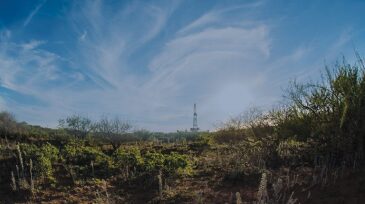Environment
The Norwegian Ministry of Energy has approved the Phase 2 expansion, which is expected to increase carbon dioxide storage capacity from 1.5 million tonnes to 5 million tonnes.
DNV’s carbon capture and storage outlook forecasts a massive shortfall in the projects necessary to help the world reach net-zero emissions by 2050.
Buoy-based camera footage, analyzed by artificial intelligence, can help reduce the risk of birds colliding with offshore wind farm turbines.
-
Global climate concerns, amplified in the public consciousness by a steady stream of violent weather events such as hurricanes and California wildfires, are generating a new set of realities for the energy industry.
-
A Florida appeals court has approved exploratory oil drilling in the Everglades, prompting worries about Miami’s water supply and risks to the wetland ecosystem.
-
Kentucky lawmakers have introduced House Bill 199 to plug orphaned oil and gas wells and abandoned storage tanks that threaten health, safety, and the environment.
-
A bipartisan group of House lawmakers introduced legislation that would ban oil and natural gas drilling in Alaska’s Arctic National Wildlife Refuge.
-
E&B Natural Resources Management, an independent oil and gas company based in California, is investing in solar electricity to help run its oil production activities in two counties. E&B’s solar initiative will reduce its greenhouse gas emissions from the two projects.
-
Under President Trump, federal agencies have moved to roll back regulations for companies that extract, transport, and burn oil, gas, and coal. Government analyses show companies will save billions in compliance costs, but the trade-off often will be adverse effects to public health and environment.
-
New Mexico Gov. Michelle Lujan Grisham has ordered state officials to develop regulations to reduce methane emissions from its oil and gas industry and separately roll back statewide greenhouse gas output over the next decade.
-
Since 2011, Equinor has reduced carbon dioxide emissions from its logistical operations for the Norwegian continental shelf (NCS) by 600,000 tonnes. The company’s ambition is to halve emissions in the NCS supply chain by 2030.
-
The deployment and adoption of digital technologies across the oil and gas value chain could help scale the effect of the industry’s methane-reduction efforts, finds a new report.
-
Recently, Nigeria's Department of Petroleum Resources issued guidelines in furtherance of the objectives of the Flare Gas (Prevention of Waste and Pollution) Regulations, 2018.













